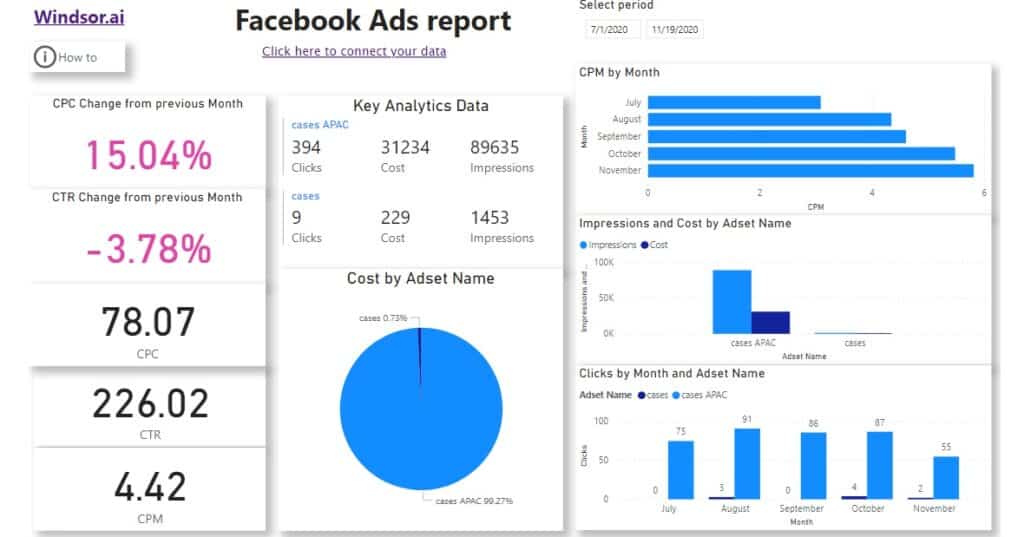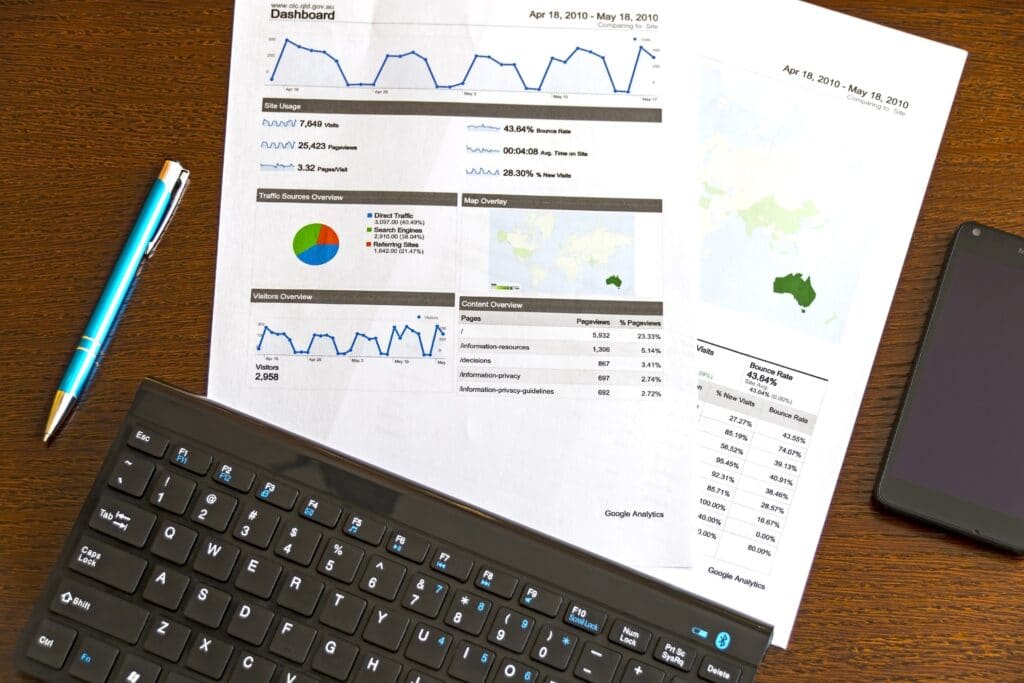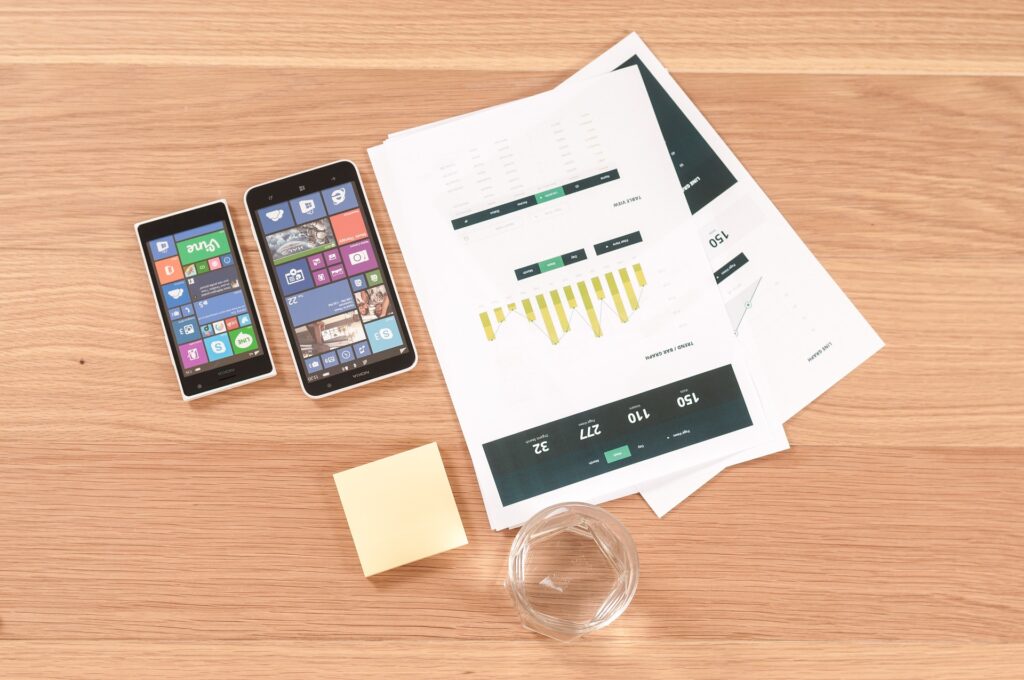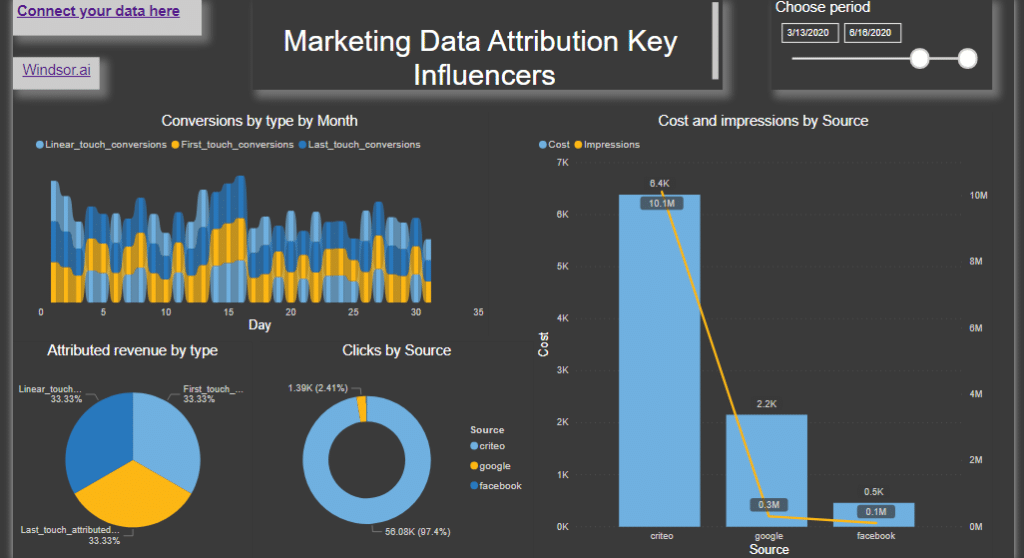Facebook Ads are an essential part of my, and many online marketing campaigns. Although some argue the importance of this platform to promote products and services, it is still a vast market. If you decide to spend some money advertising on Facebook, you would like to get most of Facebook’s analytic capability and leverage the pure range of data you can retrieve.
Facebook Ads offer more than 300 metrics and dimensions to choose from. Many third-party data analytics platforms offer various connectors to get data from Facebook. Sometimes they are more general connectors, like Windsor’s “all” connector. This approach will allow you to have one report that considers all of your marketing actions, including Facebook Ads, Google Ads, Linkedin, Twitter, and all other platforms, and your CRM data. With this, you will get the overall view of the data. Sometimes you need to get only data from one source, but more granular ones. In that case, you will use a platform-specific approach like Windsors Facebook connector. Facebook Ads offer more than 300 metrics and dimensions to choose from. The possibilities and field list are described in Facebook Ads Insights API.
To make decisions based on your own particular data, you can utilize those fields the most. You must adapt the report structure to your specific needs, especially when you copy an existing report or template you find online.
The marketing part
You need first to understand your marketing goals, then understand the data. Get to know each measured quantity and how they interact with each other,
Some of the most common but not always fully understood measures are
Clickthrough rate
CTR is a ratio showing how often people who see your ad or free product listing end up clicking it. Clickthrough rate (CTR) can be used to gauge how well your keywords and ads, and free listings, are performing.
CTR is the number of clicks that your ad receives divided by the number of times your ad is shown: clicks ÷ impressions = CTR.
A high CTR is a good indication that users find your ads and listings helpful and relevant.
Cost-per-click (CPC): Definition
Cost-per-click (CPC) bidding means that you pay for each click on your ads. CPM (CPT) Cost per thousand impressions (technically, “cost per mille”). It is an easier way to represent CPC that marketers often use.
Conversions
Conversions are what many organizations nowadays are optimizing on. The metric is called cost per action (CPA). In some cases, it’s called cost per lead (CPL). The formula here is straightforward too: CPA: cost/actions
The time dimension
We also need to acknowledge the time dimension, change over time, and how we should interpret the percentage of rising or falling trends. Moreover, once we master them, we need to find optimal ways to design reports that would give our management the easiest possible way to understand and use these newly found pieces of information.
The technical part
Let’s have a look at how you can customize your requests. Say you want to add the metrics cost per conversion and make the data more granular to see it on an ad set level. Here is the sample API URL:
https://connectors.windsor.ai/facebook?api_key=[your API key]&date_from=2020-10-20&fields=campaign,clicks,spend,impressions,date,source,adset_name,cost_per_conversion&_renderer=csv
The standard connectors URL will have the URL itself, as here is a Facebook page of the Windsor ai connectors subdomain. The whole story begins after the question mark. We would put our API key, which will enable us to access our data, and then choose the date range. You should make this range the smallest possible that would fit your reporting needs, and at the same time, optimize the data load or how much data should be transferred to your Power BI report.
The same goes for the fields you need for your report. Some fields are obligatory, and those that you can choose from the long list of Facebook fields mentioned above.
In the end, you choose the render format, in this case, CSV.
A final step in preparing your report data would be to define some additional columns and, of course, measures you will use in your report. The measures would be either some ratio scores, like CTA, CPM, or others, and some measure that will show time trends like change over period.
The list of possible measures is almost indefinite, but you should stick only to those that would significantly contribute to your report’s clarity and usefulness. Do not complicate the report. Likely, the readers would just glance at it and move on.
And mobile, of course
Don’t forget to make a mobile view for all your reports as well. It is increasingly important as more managers are using their mobile devices for access to quick reports.
If you want to know more
For more details about using Power BI, the Windsor.ai platform, and other advanced productivity tools, you can contact me here or request a custom offer on Upwork and Fiverr. It is also possible to have a direct relationship using Payoneer or PayPal. If you have some other preferred option for collaboration, please use this contact form for suggestions.
Share



